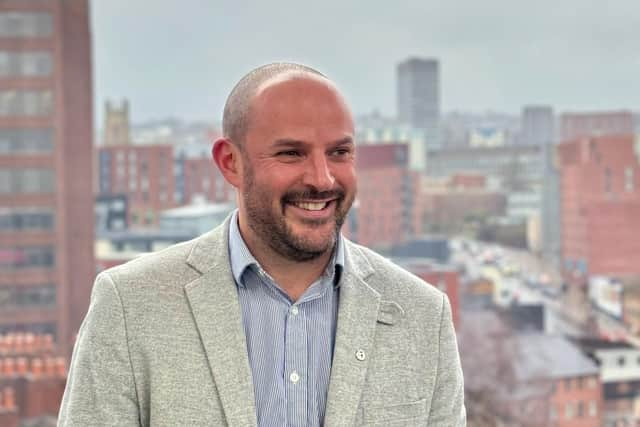Cultural projects key to boosting Sheffield’s dwindling population growth, says city’s new Chamber of Commerce president
Mr Krachai, who took over the role of chamber president in January, has said that Sheffield’s low rate of population growth compared to the rest of the country is the “biggest challenge” currently faced by the city, and that a focus on culture and the arts could play a large role in reversing this trend.
Mr Krachai has pledged to focus on culture during his time as chamber president, which he says could help to both attract more people to the city and retain people who come to study at its universities.
Advertisement
Hide AdAdvertisement
Hide AdHe said: “I think there are common problems in the city that can be addressed through a greater environment for cultural activity.


“One challenge that our universities face is the competition to attract undergraduates. Undergraduates want an interesting and vibrant place to live, and that means culture.
“We’re also going to have to be more successful in retaining talented people from all of our communities, so they don't go and achieve their potential in other cities and towns. Some of that is about jobs, but a lot of it is about having a really exciting place to live, which relies on culture.
“We're going to need to grow the population and attract entrepreneurs, social enterprises and people, and those people will want jobs but they will want somewhere interesting to live. Culture for me is the means by which we are successful in the fight for talent.”
Advertisement
Hide AdAdvertisement
Hide AdThe most recent census data, recorded in 2021, showed Sheffield’s population to have risen by 0.7 per cent over ten years to 556,500. This compared to an overall population growth rate of 6.3 per cent for England and Wales in the same period.
Mr Krachai added: “I think there is a real deep challenge around having a conversation about needing to grow our population.
“In order for cities to be successful, human history would suggest, if not show, that cities need to be growing. Their populations need to be growing year on year.
“The biggest challenge we face is that our population is not growing fast enough, and that has a real drag on a whole range of things, including making it difficult to attract and retain talent.”
Advertisement
Hide AdAdvertisement
Hide AdMr Krachai also cited Sheffield’s economic inactivity levels and ageing population as potential issues for the city, describing them as “real, deep problems”.
According to data from the 2021 Census, over 65s make up just over 17 per cent of Sheffield’s population, against a national average of 18.5 per cent.
Rates of economic inactivity vary across the city. In Sheffield Central, the rate of economic inactivity is at its lowest, at 14.7 per cent, according to figures released in January by the Office for National Statistics.
Other areas of the city, however, have much higher rates of economic inactivity, with Sheffield South East reporting a rate of 28.8 per cent, and Brightside and Hillsborough reporting a rate of 30.8 per cent.
The Hallam and Heely areas of the city reported rates of 23.6 and 24.5 per cent respectively.
Comment Guidelines
National World encourages reader discussion on our stories. User feedback, insights and back-and-forth exchanges add a rich layer of context to reporting. Please review our Community Guidelines before commenting.